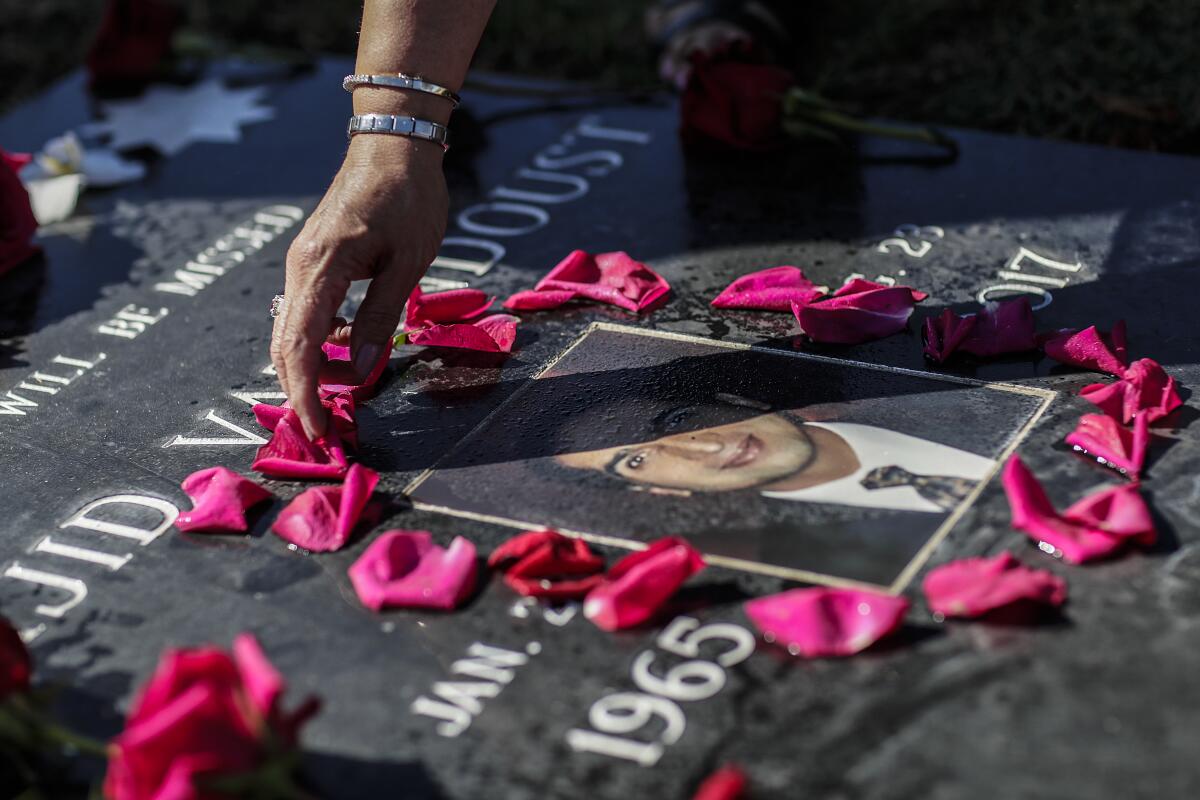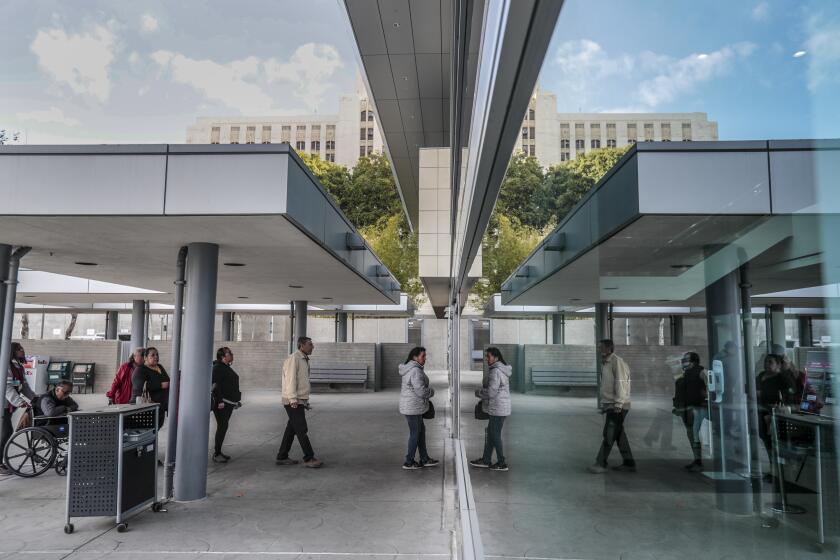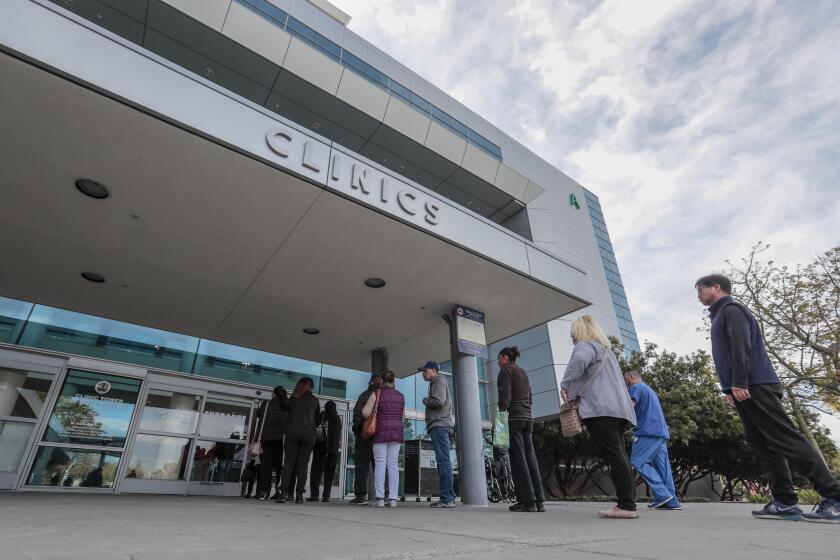L.A. County health plan hit with huge fines for delays in treating poor patients

- Share via
A cancer patient enrolled in a health insurance plan serving Los Angeles County’s poorest and most vulnerable residents was left untreated as their health rapidly deteriorated, according to state regulators.
Another enrollee was left “suffering extreme pain” for weeks while waiting for treatment.
Treatment for a third patient, diagnosed with lymphoma and given less than a year to live, was delayed for more than two months. That patient left the plan, L.A. Care, for other insurance in a desperate attempt to save their life.
All three cases stem from “deep-rooted” failures that continue to threaten the health of patients whom L.A. Care is entrusted to serve, according to state health regulators. On Friday, the state announced $55 million in fines against the publicly operated health plan that insures more than 2 million Medi-Cal patients and other low-income recipients. It is by far the largest such penalty in state history, outstripping the previous record fine of $10 million.
The historic fines follow a state investigation sparked by a September 2020 Times article that found that patients at L.A. County run hospitals and clinics — many of whom are covered by L.A. Care — faced agonizing, sometimes deadly delays to see specialists.
Thousands of patients in L.A. County’s public hospital system face long, sometimes deadly waits to see specialists, a Times investigation has found. The system serves primarily the region’s poorest and most vulnerable residents.
While health plans are required to offer their patients specialist appointments within 15 days, The Times found the average wait at L.A. County Department of Health Services facilities was 89 days following a referral from a primary care provider.
Even patients waiting to see doctors whose prompt care can mean the difference between life and death — neurologists, kidney specialists, cardiologists — endured delays that stretched on for months, according to The Times’ analysis of 860,000 requests for specialty care at county health services department facilities from 2016 through 2019.
State regulators not only found that L.A. Care is failing to ensure that patients have timely access to care, but it is failing to authorize needed treatment and address patients’ complaints. The health plan had a backlog of 67,000 formal grievances that had not been resolved, according to documents made public Friday.
“The scope and breadth of [L.A. Care’s] violations indicate deep-rooted, systemic failures that threaten the health and safety of its members,” said Michelle Baass, director of the state Department of Health Care Services, one of two agencies announcing sanctions.
“My hope is that this sends a strong message to the entire industry that the state takes very seriously protecting all consumers, but particularly our most vulnerable enrollees,” said Mary Watanabe, director of the Department of Managed Health Care, which imposed the largest fine, $35 million.
In an emailed statement, L.A. Care officials acknowledged some of the deficiencies found by state regulators but said it took issue with the unprecedented fines, which it described as “unreasonable and not based on facts.”
The backlog of grievances will be resolved this month, and L.A. Care is working with the L.A. County Department of Health Services to bring them into “full compliance,” the statement read.
The statement described the fines as “arbitrary and unnecessarily punitive” and said that L.A. Care will contest them.
Noting the magnitude of the penalties, L.A. Care officials expressed concern over “yet another financial hurdle for a public health plan that is a crucial part of the health care safety net in Los Angeles County.”
A timeline charts the waits of three L.A. County Department of Health Services patients whose records were reviewed as part of a Times investigation that found long, sometimes deadly delays for treatment for thousands of patients.
While patients covered by L.A. Care have access to some doctors in private practice, many get care through the county-owned, safety-net hospital system that includes the Los Angeles County-USC Medical Center in Boyle Heights, Harbor-UCLA Medical Center in Torrance and Olive View-UCLA Medical Center in Sylmar.
State regulators highlighted several grievances over long wait times in the county’s health services department facilities.
In one case, a patient with suspected skin cancer had to wait seven weeks for a dermatology appointment and another seven weeks for a biopsy. According to the accusation, the dermatologist said there was usually a two-month wait for appointments.
“That is the way it has been in this clinic for the past 35 years,” the dermatologist said.
In another case, a patient’s eye surgery was repeatedly rescheduled over four months. By the time the patient filed a grievance, authorization for the surgery had expired.
“The magnitude of L.A. Care’s violations, which has resulted in harm to its members, requires immediate action,” regulators said in a news release.
A spokeswoman for the health services department said the agency reviewed its files and didn’t believe the cases described by regulators involved patients under its care.
In an emailed statement, Dr. Christina Ghaly, L.A. County’s director of health services, said the bulk of the regulators’ findings were about issues unrelated to care provided by her agency.
“It must be underscored that the $55 million fine falls solely on L.A. Care for their operational failures that significantly impact the health and safety of the 2.4 million health care consumers they serve,” Ghaly said. The majority are not health services department patients, she said. “Neither LA Care nor the State have requested systemic changes to our delivery of timely specialty care access.”
For The Times 2020 story, reporters were unable to determine how many patients died waiting to see specialists; county health officials said they didn’t track such outcomes. But the reporters obtained medical records of six patients who faced delays of at least three months to see specialists and died of the illnesses they were waiting to have treated.
The Times’ investigation finding long, sometimes deadly waits to see specialists in L.A. County’s Department of Health Services started with a phone call from a doctor in 2018.
They included 61-year-old Isabel Lainez, whose bladder and kidney problems were so bad she became incontinent — wetting herself on the bus, in the car, in an elevator — while waiting 10 months to see specialists. She died of chronic kidney disease before she got an appointment.
Majid Vatandoust was denied a colonoscopy, despite classic symptoms of colon cancer, because he was 49 and his county gastroenterologist said cancer screening is “not valid for patients under 50.” By the time Vatandoust turned 50 and was approved for the test, the cancer in his colon had spread to other organs. It killed him two years later, according to The Times investigation.
In an emailed statement, L.A. County Supervisor Holly Mitchell, who also sits on L.A. Care’s board of governors, said her primary concern is for the care and protection of the residents served by the plan.
“There continues to be a need to build upon the remedies L.A. Care has put in place for the safety of constituents,” Mitchell said. “It is my full expectation that L.A. Care is cooperative and expeditious in doing so.”
A decade ago, a public outcry over lengthy medical delays and patient deaths spurred California to set specific limits on how long insurers can keep sick people waiting to see a doctor.
Beth Capell, a policy advocate with Health Access California, a consumer group that helped push for the 15-day limit to see specialists, called the $55-million fine “substantial.”
“We’re very glad to hear that they are taking aggressive action to ensure that every patient in the L.A. County hospital system has timely access to care,” Capell said.
More to Read
Sign up for Essential California
The most important California stories and recommendations in your inbox every morning.
You may occasionally receive promotional content from the Los Angeles Times.















